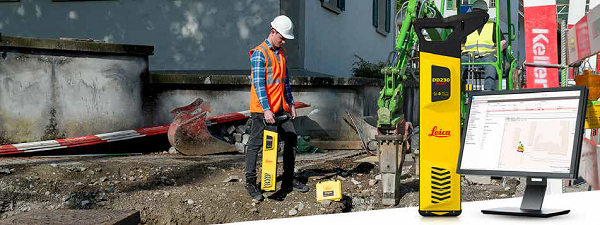Everyone has a duty of care to take reasonable steps to prevent damage to underground networks. Pipes and cables, pits and pipes are all valuable community assets. These assets provide us with the energy, water and communications on which modern societies depend.
Preventing damage to underground assets can be difficult. We can’t see through the earth with our naked eyes, and we can’t dig by hand through concrete and asphalt.
Modern utility networks are complex. They involve thousands of kilometres of buried pipes or cables of different sizes, along with specialised equipment to keep the products flowing.
Many of these assets have been in the ground for decades. In that time roads have been realigned, road levels have been raised or lowered, landscaping and buildings have changed the landscape. All of these actions affect the relative depth and alignment of existing networks.
How do we protect these assets from damage? The answer to that lies in:
- Making safe digging part of your work practices
- Building awareness
- Better equipment
- Increasing user skill
- Government support
Let’s look at these in detail.
Making Safe Digging Part Of Your Work Practices
Contractors are increasingly understanding that a safer worksite relies on building asset protection into the way they think and work. Not just at the construction stage, but all the way through a project from conception to completion. This includes:
- Introducing safe working practice
- Training local asset location contractors in equipment use
- Implementing methods of safe working
- Building awareness of the dangers involved in excavation
Building Awareness
Build awareness not only of what lies underground but also of the consequences of not knowing what is beneath your excavator’s bucket or shovel. A utility strike is not only costly in terms of damaged utilities and service interruption, but It can also affect lives with potentially fatal consequences.
This means that scanning before digging needs to become a standard practice wherever there are buried cables.
Better Equipment
Modern equipment allows trained users to peer into the ground and see what’s below.
Since the introduction of automatic DigiCAT locators in the early 2000s, Leica Geosystems has been an innovator in utility detection, simplifying workflows and increasing capabilities to analyse asset data in less time.
The launch of the new DD SMART utility locator solution is an avoidance tool that allows users to map buried utilities, transfer and access data remotely to a hosted service for multiple users across multiple sites to manage site activities. The Leica DD SMART utility locator series uses industry- eading digital signal processing to identify underground assets deeper, faster and more accurately than any other system.
Increasing User Skill
The best laws, equipment and risk awareness will not help someone who does not know how to use the equipment. Yet, it is not simply user skill in equipment use – it is ensuring that operators know how to visually scan an area for clues about what might be underground and where. It is giving them the understanding that one scan at ground level is not enough; they need to keep scanning throughout the dig. The operator also needs to be aware that if the locator receiver unit is used on its own only some buried cables can be found, but if you want to be thorough and have reliable readings, you will need to use a signal transmitter too. It is all these things and more.
With automatic pinpointing, onboard video tutorials, usage alerts, and audio and visual displays in DD SMART utility locators, Leica Geosystems simplifies utility location. Nonetheless, without formal training in the use of the equipment and cable locating, assets and people are still in danger.
Dial Before You Dig (DBYD) Certification Ltd offers certification for asset locators working with Dial Before You Dig asset owners and contractors. The Certification recognises Locators who have demonstrated a high level of theoretical knowledge and practical expertise that meet industry and Dial Before You Dig utility member requirements. Visit www.dbydlocator.com for more information.
Before DBYD certification is attempted it is recommended that the user attends comprehensive theoretical and hands on practical training by a training organisation experienced in utility locating and damage prevention. C.R. Kennedy, the exclusive distributor of Leica Geosystems here in Australia, collaborates with partners to offer regular 2-day courses at any of their training facilities across Australia. The course can also be held at the customer’s premises.
Knowing how to use the equipment properly and applying a well-founded knowledge to an excavating environment is most important for finding and identifying assets correctly, and therefore, staying safe during excavation.
Government Support
As with Occupational Health and Safety, governments are increasingly requiring that asset location and protection are performed on projects.
The Australian Workplace Health and Safety Code of Practice for Excavation requires use of the Dial Before You Dig service. Workers using electromagnetic cable locators and ground penetrating radar must also have attended relevant training and be competent in their use.
In New South Wales it is a criminal offence to knowingly or recklessly damage electricity or Natural Gas networks.
[colored_box color=”yellow”]Call or Contact C.R. Kennedy to discuss how the Leica DD SMART locator can assist you to reliably detect underground utilities and report it online on 1300 886 982
For more information or visit http://survey.crkennedy.com.au [/colored_box]



